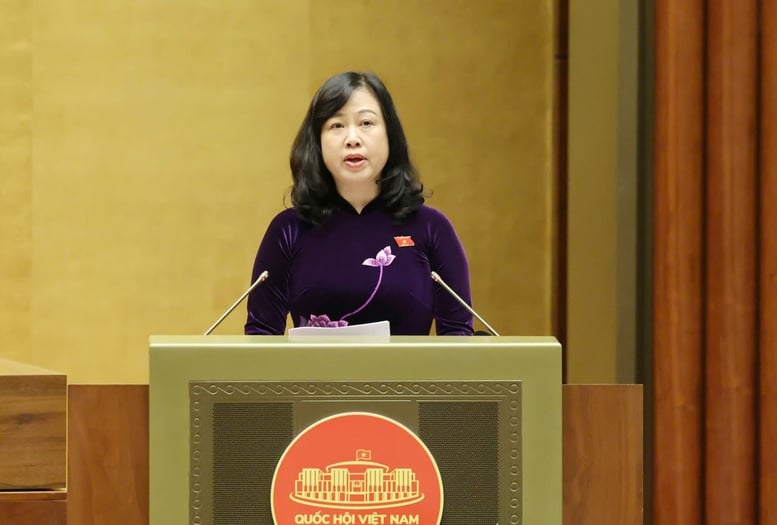
Minister of Health Dao Hong Lan reports briefly on the draft Population Law - Photo: VGP/Nhat Bac
At the 10th session of the 15th National Assembly on October 23, Minister of Health Dao Hong Lan briefly reported on the draft Population Law, drafted by the Ministry of Health.
This is considered an important foundation, creating a comprehensive and synchronous legal framework for population and development work in the new period.
Focus on core policies, not duplication
Accordingly, population work has a broad connotation, related to many areas of economic and social life. Meanwhile, factors on population size, structure, distribution and quality have been regulated in various laws, such as the Law on Children, the Law on the Elderly, the Law on Gender Equality, the Law on Residence, the Law on Education, the Law on Health Insurance, the Law on Medical Examination and Treatment, etc.
Therefore, the draft Population Law is presented briefly, including 8 chapters and 28 articles, focusing on core, non-overlapping policies, including: Maintaining replacement fertility; minimizing gender imbalance at birth; adapting to population aging; improving population quality; communication - advocacy - education on population; and ensuring conditions for implementing population work.
Specifically: Regarding maintaining the replacement fertility rate, the draft proposes policies to encourage giving birth to two children, including financial support for women who give birth to two children before the age of 35, women from ethnic minorities with very few people, and women in localities with low fertility rates. In addition, women in these groups are given priority to buy or rent social housing, and have increased maternity leave when giving birth to a second child.
Regarding reducing gender imbalance at birth, the draft adds synchronous measures, strengthens communication to change gender stereotypes, controls fetal sex selection behavior, and requires the Government to periodically publish a list of localities with high levels of imbalance or those that have achieved natural balance in order to have appropriate intervention policies.
Regarding population aging adaptation, the draft devotes a chapter to policies to support elderly care, encourage the development of long-term care services, community care; develop geriatric human resources, train medical staff, doctors, and social workers to serve the elderly; and at the same time, supplement regulations on establishing a system to receive and process information and denounce acts of violating the rights of the elderly, contributing to ensuring the rights and quality of life of this population group.
Regarding improving population quality, the draft emphasizes solutions for counseling, pre-marital health check-ups, prenatal and neonatal screening and diagnosis of congenital diseases, ensuring all children are born healthy, contributing to reducing the medical burden and improving the physical and mental health of Vietnamese people.
Regarding communication and population education, the Law specifically stipulates communication forms according to target groups, combining traditional education and technology application, aiming to change social awareness of gender equality, family size and reproductive responsibility.
In particular, an important new point is that the draft strengthens decentralization, empowering local authorities at the provincial level to proactively choose measures, timing and arrange budget to implement population policies, in accordance with the socio-economic characteristics and population dynamics of each region.
Regarding administrative procedures, the draft does not directly regulate them but assigns the Government to provide detailed instructions in sub-law documents, ensuring to avoid the emergence of new procedures while maintaining consistency in the legal system.
The Ministry of Health emphasized that the promulgation of the Population Law not only inherits current regulations, but also aims at a modern, humane, and flexible policy framework, contributing to building a comprehensively developed population, adapting to aging, improving the quality of human resources and ensuring sustainable social security.
Expanding tuition and child support policies
In his summary report on the draft Population Law, Chairman of the Committee for Culture and Society Nguyen Dac Vinh affirmed that the draft law has institutionalized the Party's policies and guidelines on population work, is consistent with the Constitution, and basically ensures unity and synchronization in the legal system.
However, the review agency also requested the drafting agency to continue reviewing and supplementing some specific contents to ensure feasibility and consistency between the Submission, the draft Law and the component reports, and at the same time carefully assess the impact of policies, implementation resources and international experience suitable to Vietnam's conditions.
Regarding the overall policy on population work, the Committee recommends that the drafting agency add an article regulating the State's policy on population work in the general provisions section, demonstrating the overall policy framework guiding key areas, such as living conditions, housing, education, and health care.
This regulation needs to closely follow Resolution No. 21-NQ/TW and Resolution No. 72-NQ/TW of the Politburo, in order to institutionalize the viewpoint of shifting policy focus from family planning to population and development.
Regarding solutions to maintain replacement fertility, the Committee recommends that there should be a comprehensive, fundamental and sustainable solution, including research on financial support for women who give birth to two children, especially women under 35 years old; clarifying the criteria for "localities with low fertility rates"; and adding regulations requiring the Government to periodically announce the fertility status to help localities develop appropriate incentive policies.
Some suggestions include a universal approach, direct support for children born, expanded tuition policies, child support, as well as reproductive support measures, infertility treatment, and reduced abortion rates.
Regarding the control of gender imbalance at birth, the Committee proposed to revise the regulations to be more comprehensive, ensuring consistency with the prohibited acts in Article 6; at the same time, request the Government to periodically publish a list of localities with high gender imbalance or having achieved natural balance.
Some opinions suggest that it is necessary to re-evaluate the feasibility of the regulation in Clause 2, Article 15, based on the effectiveness of measures from the Project to Control Gender Imbalance at Birth for the 2016-2025 period.
Regarding adaptation to population aging and improving the quality of life of the elderly, the Committee proposed to rename Chapter IV as “Adaptation to population aging”, and to add the concepts of “healthy aging”, “preparation for old age”, “intergenerational” and “quality of life of the elderly”.
The draft needs to have policies to encourage the private sector to develop care facilities, medical services, culture, and education for the elderly, as well as clearly define the role of the State in developing human resources for geriatrics. In addition, it is necessary to clarify the process of receiving, processing information and reporting violations of the rights of the elderly.
Regarding comprehensive population quality improvement, the Committee proposed expanding the scope of regulation of Articles 20 and 21 towards integrating medical and social factors; adding regulations on reproductive health care, congenital disease screening, pre-marital counseling and ensuring funding for implementation.
Chairman of the Committee for Culture and Society Nguyen Dac Vinh said that the Draft needs to be reviewed to be consistent with current regulations of the Law on Medical Examination and Treatment and the Law on Health Insurance.
Hai Lien
Source: https://baochinhphu.vn/du-thao-luat-dan-so-ho-tro-tai-chinh-cho-phu-nu-sinh-du-2-con-truoc-35-tuoi-phu-nu-dan-toc-thieu-so-102251023125454721.htm


![[Photo] Prime Minister Pham Minh Chinh chairs meeting on railway projects](https://vphoto.vietnam.vn/thumb/1200x675/vietnam/resource/IMAGE/2025/10/23/1761206277171_dsc-9703-jpg.webp)







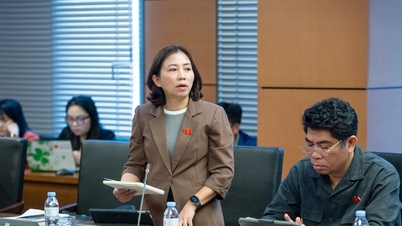


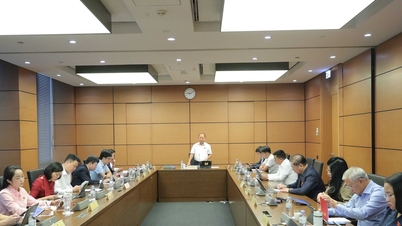

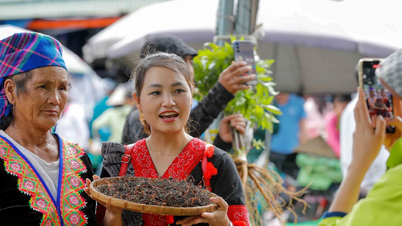
















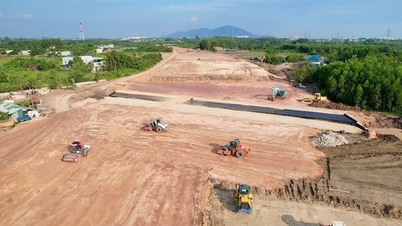

















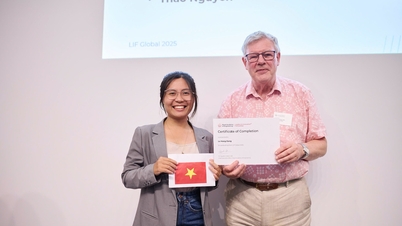



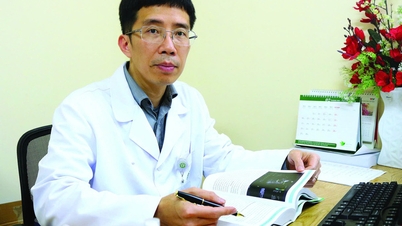






















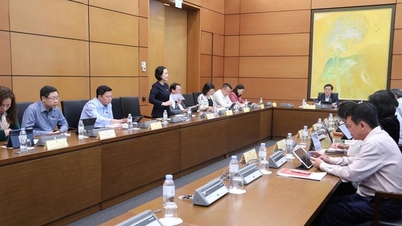









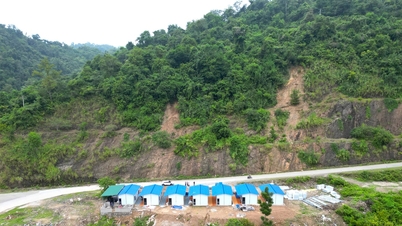

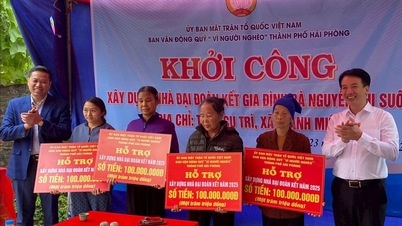

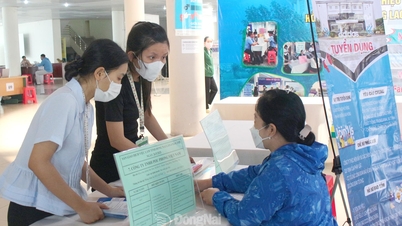
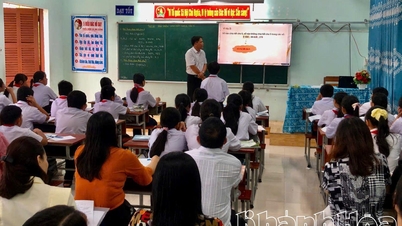
















Comment (0)